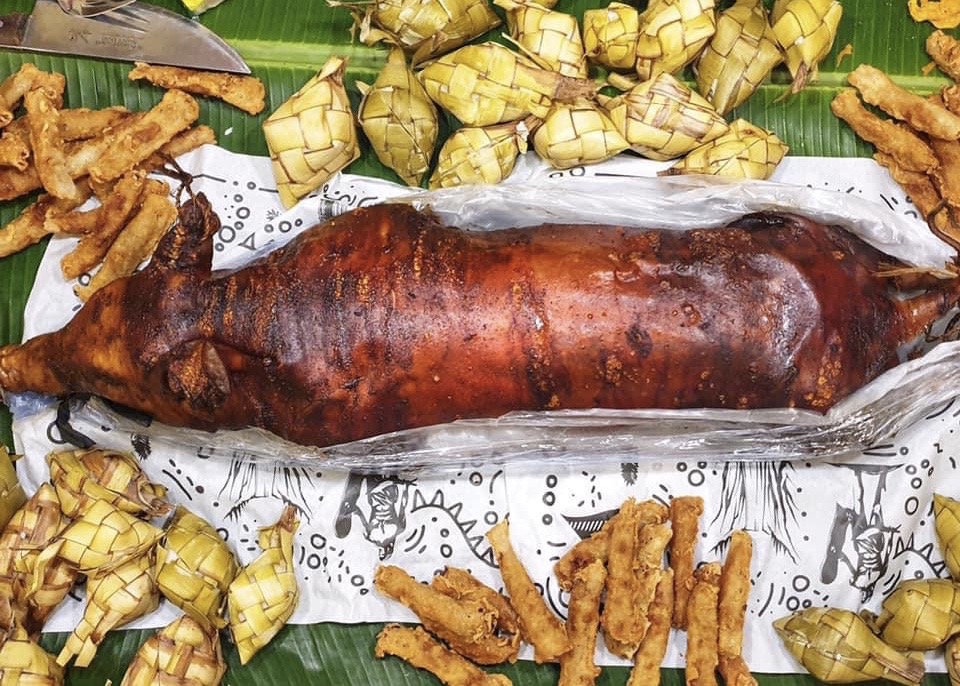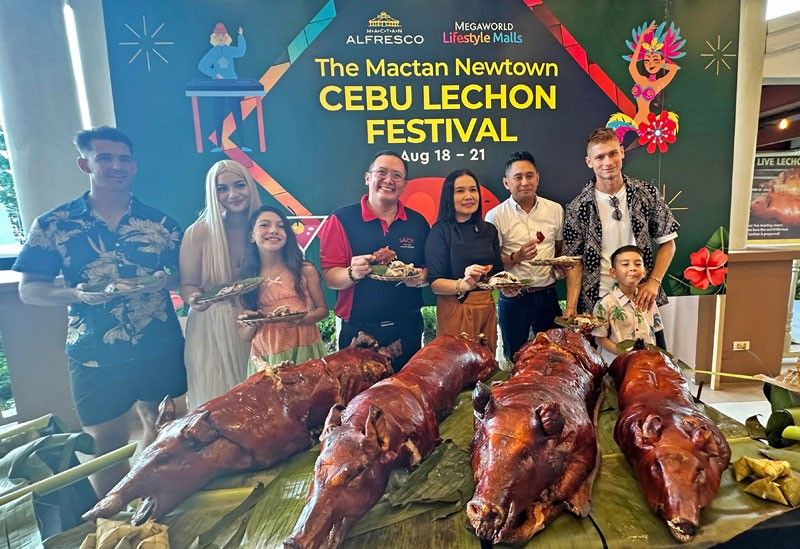Lechon, the slow-roasted whole pig, is a cornerstone of Filipino cuisine. But within the archipelago, Cebu Lechon reigns supreme, captivating palates with its distinct flavor profile and irresistible texture. This beloved dish transcends mere sustenance; it’s a cultural icon, a centerpiece at celebrations, and a testament to generations-old culinary traditions. But what exactly makes Cebu Lechon so special and unique?
The Art of the Roast: Technique and Tradition
Cebu Lechon’s magic lies in a meticulous roasting process honed over time. Unlike lechon in other regions, which may be stuffed with aromatics, Cebu’s version prioritizes the inherent flavors of the pig. Local “manglilihog” (roasters) meticulously clean and prepare the pig, sometimes using a special paste to remove unwanted hair. The show’s star is the marinade, a secret blend of spices that varies from one lechonero (roaster) to another. Common ingredients include garlic, lemongrass, peppercorns, and sometimes even star anise. This fragrant concoction massages deep into the meat, imbuing it with a subtle yet complex flavor.
The roasting method is a sight to behold. Pigs are skewered on a metal rod and slowly rotated over hot coals. Skilled manglilihog constantly baste the skin with oil and sometimes achuete (annatto) seeds, giving it a vibrant reddish hue. This continuous basting is crucial for achieving the pièce de résistance of Cebu Lechon: the crackling skin, known as “liempo.” The perfect liempo is a symphony of textures – shattering into a satisfying crackle with each bite, yet yielding a delightful chewiness.

Hours of slow roasting transform the pig into a culinary masterpiece. The meat remains juicy and tender, infused with the subtle smokiness of the charcoal and the fragrant marinade. The liempo takes center stage, boasting a deep golden brown color and an audible crisp that sends shivers down any foodie’s spine.
Beyond the Pig: Flavorful Accompaniments
While the star of the show is undoubtedly the lechon itself, no Cebu Lechon experience is complete without its accompaniments. A staple is the “atsara” (pickled vegetables), usually made with shredded papaya and carrots, offering a refreshing counterpoint to the richness of the pork. A tangy and spicy “sili vinegar” (chili vinegar) is also often on hand, adding a delightful kick to each bite.
For those who prefer a milder accompaniment, a simple “toyoman” (soy sauce) and calamansi (a citrus fruit) mixture is another popular option. Steamed rice serves as the perfect base for the lechon, soaking up the savory juices and providing a satisfying textural contrast.
A Celebration of Community: Cebu Lechon and the Filipino Table
Cebu Lechon transcends its role as a dish; it symbolizes community and celebration. The aroma of roasting pig often fills the air during festivals, fiestas, and family gatherings. Seeing a glistening whole lechon being brought to the table elicits a collective gasp of delight. Carving and sharing the lechon fosters a sense of togetherness and appreciation for this culinary treasure.
A Culinary Legacy: The Evolution of Cebu Lechon
Cebu Lechon’s roots trace back to pre-colonial times, when pigs were roasted over open fires for special occasions. Spanish influences may have introduced new spices and cooking techniques, further refining the dish. Over generations, Cebu Lechon has evolved, with each lechonero adding its personal touch to the marinade and roasting process. This constant evolution ensures Cebu Lechon remains a dynamic and exciting culinary experience.
Modern Takes on a Classic: Cebu Lechon Belly and Beyond
While the classic whole pig lechon remains king, Cebu’s culinary scene has embraced variations. Cebu Lechon Belly, featuring just the pork belly portion, has risen in popularity. This allows for an even crispier skin and a more manageable serving size.
In recent years, innovative chefs have begun experimenting with lechon, incorporating it into dishes like lechon flakes (perfect for salads) and even lechon ice cream (a surprisingly delicious take on the classic). These modern interpretations show the versatility of Cebu Lechon and its potential to inspire future generations of Filipino cuisine.

A Bite of Cebu: The Lasting Impact
Cebu Lechon is more than just a dish; it’s a cultural touchstone, a sensory experience that encapsulates the warmth and vibrancy of Cebu. From the meticulous preparation to the celebratory atmosphere it creates, Cebu Lechon is a testament to Filipino culinary artistry and the enduring power of tradition. The next time you have the opportunity to savor that crackling skin and juicy meat, take a moment to appreciate the generations of passion and skills.
The Competitive Spirit: Cebu’s Lechoneros and the Quest for Perfection
Cebu’s lechon scene thrives on a healthy dose of competition. Numerous lechon restaurants and carinderias (small eateries) dot the landscape, each vying for “best lechon.” This competitive spirit pushes lechoneros to constantly refine their techniques, experiment with flavors, and maintain the highest quality standards.
Food festivals and competitions further elevate the game. Renowned lechoneros showcase their skills, judged on factors like the crispness of the liempo, the juiciness of the meat, and the overall balance of flavors. These events attract tourists and serve as a platform for lechoneros to learn from each other and push the boundaries of this beloved dish.
The Legacy of Cebu Lechon: A Beacon of Filipino Cuisine
Cebu Lechon has garnered international acclaim, becoming synonymous with Filipino culinary excellence. It has been featured on food shows, travel blogs, and even Michelin guides. This recognition has boosted Cebu’s tourism industry and served as a source of national pride. Cebu Lechon stands as a testament to the richness and diversity of Filipino cuisine, showcasing the depth of flavor and meticulous technique that sets it apart.
The Future of Cebu Lechon: Sustainability and Innovation
Looking ahead, the future of Cebu Lechon is bright. Lechoneros increasingly focus on sustainable practices, sourcing pigs raised humanely and using eco-friendly charcoal alternatives. Innovative chefs are exploring new ways to utilize leftover lechon scraps, minimizing waste and creating new dishes.
Technology is also making its mark. Online ordering platforms allow for convenient delivery of lechon, while social media has become a powerful tool for lechoneros to connect with customers and showcase their craft. With a focus on sustainability, innovation, and the careful preservation of tradition, Cebu Lechon is poised to continue captivating palates for generations to come.
A Culinary Adventure Awaits: Experiencing Cebu Lechon Firsthand
For the ultimate Cebu Lechon experience, a visit to the island itself is a must. Travelers can embark on a lechon crawl, sampling the offerings of different restaurants and carinderias. A visit to a traditional lechon stall allows for a firsthand glimpse into the roasting process, the pig’s rhythmic turning, and the skin’s hypnotic crackling.
But for those unable to travel to Cebu, fret not. Cebu Lechon shops are popping up in major cities across the Philippines and even internationally. These outposts offer a taste of Cebu magic, allowing food enthusiasts to experience this iconic dish’s unique flavors and textures.
Final Thoughts: A Celebration of Flavor, Tradition, and Community
Cebu Lechon is more than just a culinary delight; it’s a cultural tapestry woven from generations of tradition, skilled craftsmanship, and a deep love for food. It’s a dish that brings people together, ignites conversations and creates lasting memories. So, next time you encounter Cebu Lechon, take a moment to savor the crackling skin, the juicy meat, and the rich history it represents. It’s a taste of Cebu, a taste of the Philippines, and a testament to the enduring power of culinary tradition.
See Also:
- A Guide to Camping and Hiking in Canlaon City
- Exploring Canlaon City: A Haven of Natural Wonders
- Top 14 Resorts, Swimming Pools, and Campsites in Kabankalan City
- Danjugan Island Travel Guide
- Top 12 Best Resorts in Cauayan, Negros Occidental
